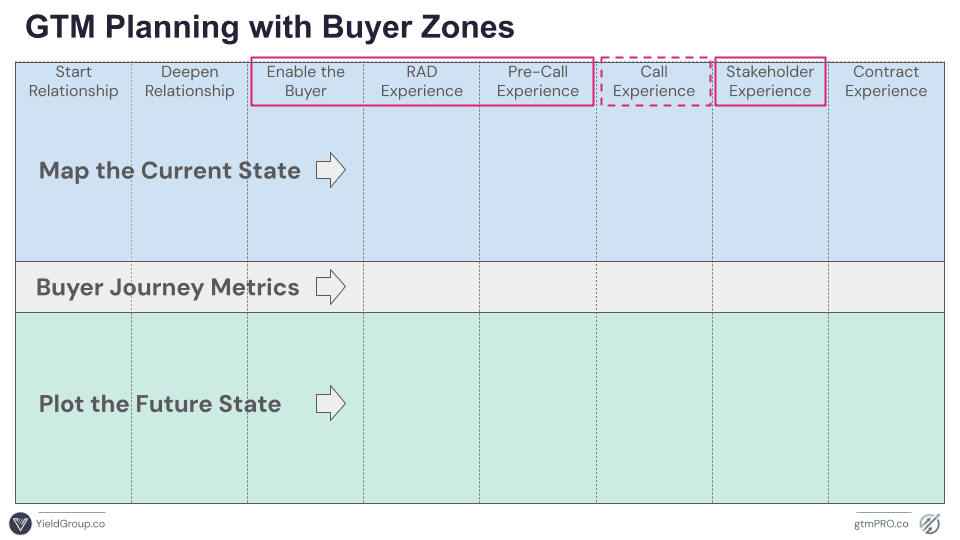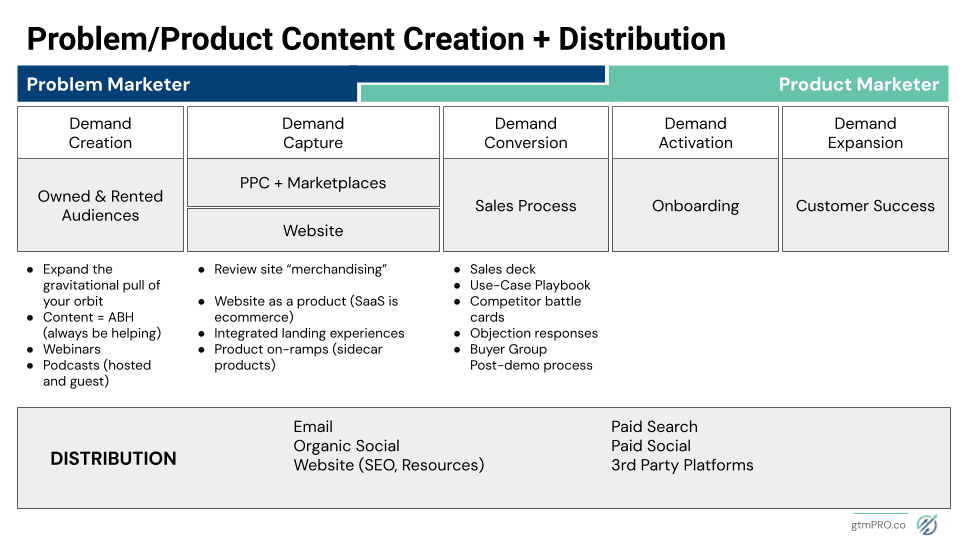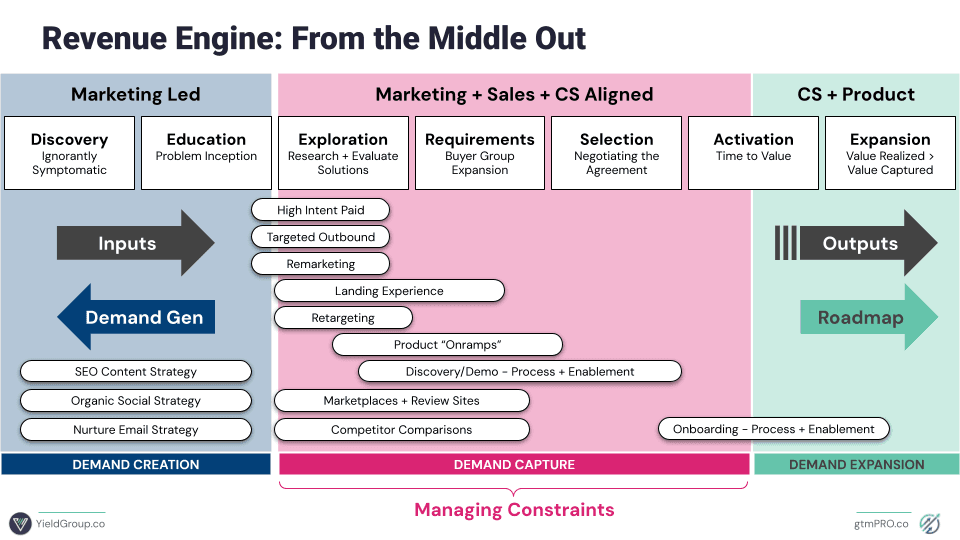Buyer Zones
The key to marketing prioritization is using buyer "zones"
Good Day PROs!
Marketing is the only function that touches every aspect of the buyer journey, so every other team always needs something from marketing. Small teams therefore struggle with prioritization. This short should help. Let's go!
What Are "Buyer Zones?"
Buyer "Zones" are where the buyer's journey intersects a typical B2B process of demand:
Create
Capture
Convert
Activate
Expand
… as well as the stages of buyer awareness:
Discovery (what we call, ignorantly symptomatic)
Education (problem inception + definition)
Exploration
Requirements (where the Buyer Group expands)
Selection (Negotiation)
Activation (Moment of Value)
Expansion
The problem with the Demand Model is that it is focused on us vs the buyer. This model describes what we are trying to accomplish vs delivering value to/for the buyer.
In contrast, the Stages of Buyer Awareness helps reveal the Buyer's "jobs," but it is not very useful for us as a tool to assess and prioritize actions to improve the Go-to-Market engine.
Buyer Zones are therefore a blend of the two and help us not only identify where the buyer is getting "stuck" in our process (i.e. leakage in the revenue engine), but also where to prioritize our efforts for impact.
Most importantly, because it considers what they Buyer needs within each of these Zones, it serves to align the Revenue team on an input variable (e.g. improve lead to opportunity conversion) vs. tactics.
Example Buyer Zone Map

The objective with the Buyer Zone Model is to map out the Buyer's entire experience within each zone, as well as the metrics that are captured through the journey (visits, conversion rates, velocity, etc.), which helps reveal "leakage" in the process.
Notice that several Zones are highlighted; Enable the Buyer, RAD (Request a Demo), Pre-Call and Stakeholder. These zones are called out because this is where we most often see the best opportunity for improvement that drives impact in the near term.
Let's take "Pre-Call" as an example. From the moment the Buyer hits "submit" on the 'request a demo' form, what is their experience? What questions are most common? What do they most want to see or learn? What are is there (undeclared) cynicism?
By focusing, end-to-end, on this specific zone, it's likely a few minor changes can significantly upgrade the buyer's experience and therefore the impact we can have within the "Call Experience" zone, which we can monitor via our previously determined metrics.
The Evolution to the Zones
Several years ago, we were using the Demand Model to describe the integrated content and motions to distribute that needed to be considered across the revenue engine.

Although this helped bring structure to the types of content and relevant distribution mediums required, the sections of Demand were too broad to tightly define the set of actions and assets on which to focus.
What DID come out of this model was the idea of the "Problem Marketer" as a complement to the Product Marketer.
In our work with over 50 companies in the lower middle market, we have found that the single biggest bottle neck to GTM success is the lack of a unified, consistent, deep understanding of the Buyer and their problems across the company.
Enter, the Problem Marketer. But we will cover this topic in our next post 😁
Starting from the Middle Out
The next phase of the evolution overlaid the Buyer Awareness Model onto the Create - Convert, Expand stages of the Demand Model, which served as the prequel to GTM Zones.
This evolution helped link together the buyer's needs with internal motions, but it misrepresents the stages of awareness / "jobs" as linear, which they absolutely are not.
This model also did not solve for the challenges in prioritization, as the tactics were still too broad (e.g. landing experiences, retargeting, etc.).

Bringing It All Together
As you can see, we are never done iterating on our frameworks. The core concepts remain constant, but we are constantly looking for ways to make our tools as broadly applicable as possible.
We have found that the Buyer Zones Framework makes it easier to be laser-focused on a discrete part of the buyer's experience while simultaneously considering the "jobs" they need to complete … are they still clarifying the problem, building requirements, tire-kicking solutions?
This tool enables us to consider the core information buyers need, then repurposing that information into multiple assets that can be used across multiple zones.
Build once, distribute many.
Do you think the Buyer Zones framework will help you plan and prioritize work across the GTM engine? We would love your feedback, so send an email to hello@gtmpro.co and let us know!
We also encourage you to follow gtmPRO on LinkedIn!





